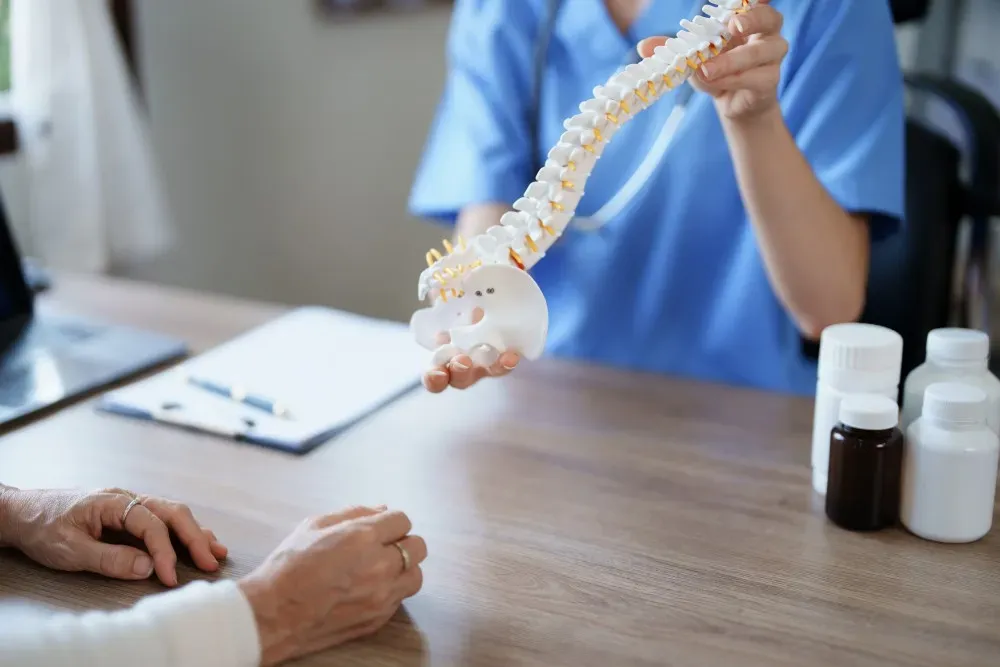Neurosurgery & Orthopedic Surgeons in Jacksonville

How Do I Know if My Shoulder is Dislocated?
The shoulder is the body’s most mobile joint and can move in several directions. For us, that’s amazing, because it means we can perform a wide range of pushing, pulling and swinging motions with ease.
The shoulder is the body’s most mobile joint and can move in several directions. For us, that’s amazing, because it means we can perform a wide range of pushing, pulling and swinging motions with ease. But the increased mobility of the joint causes it to be unstable and prone to injuries like a dislocated shoulder.
A dislocated shoulder is a common injury that occurs when the upper arm bone pops out of the shoulder socket. A dislocated shoulder causes significant pain and loss of movement when the bone is forced out of place. Dislocation can occur backward, or forward and downward. You may suffer a partial dislocation (when the arm bone is partially in and partially out of the socket) or a complete dislocation.
It takes significant force to dislocate the shoulder joint. The injury is commonly caused by a direct blow to the shoulder, a sports collision during contact sports, falls, a traumatic incident like a car crash and extreme rotation of the joint (like twisting the arm forcefully). Sometimes, shoulder dislocation also causes damage or tearing to the surrounding muscles, tendons, ligaments, nerves or blood vessels.
It’s important that you seek medical care immediately if you suffer any of the signs of a dislocated shoulder listed below. Failing to properly treat the injury could cause long-term joint damage and instability, weakness and future dislocations.
SIGNS OF A DISLOCATED SHOULDER
Dislocation is a serious shoulder injury that causes intense pain. Along from severe shoulder pain, you may also have the following symptoms:
- Inability to move the shoulder joint
- Inability to bear weight on the injured arm
- Visible deformity of the shoulder joint
- Swelling, bruising and tenderness
- Numbness, weakness or tingling in the neck or arm
- Muscle spasms
NEXT STEPS: SEEK MEDICAL CARE IMMEDIATELY
If you have partially or completely dislocated your shoulder, seek medical attention at once. Move the injured shoulder as little as possible and make a sling or brace to hold the joint immobile if you can. Do not attempt to pop the joint back into place — you run the risk of worsening the injury and damaging nearby soft tissues, nerves or blood vessels. Apply ice to the area to help reduce pain and swelling while you wait for the doctor.
Your doctor will order an X-ray to visualize the dislocation and surrounding tissue damage. Then, your doctor will manually manipulate the upper arm bone back into the shoulder socket. This process is called a closed reduction. You’ll receive an anesthetic or muscle relaxant injection for pain control during the repair. Once the arm bone is restored to its proper place, you should feel an immediate reduction in pain.
In some cases, you may need surgery to repair a dislocated shoulder. Surgery is considered if you have a history of dislocations and your joint has become chronically unstable. You may also need surgery to repair damage or tears to the surrounding ligaments and tendons.
TREATMENT AND RECOVERY
With conservative treatment, you should make a full recovery within a few weeks. Your doctor will prescribe the following:
1.) Rest and ice. Refrain from strenuous activities like playing sports and lifting heavy objects during the healing process. Apply ice for the first few days to ease pain, swelling and inflammation. Afterward, you can apply hot compresses to relax the muscles and tissues.
2.) A sling or brace. You’ll need to keep your shoulder in a sling or brace while it recovers. However, it shouldn’t be immobile the entire time — as soon as your doctor gives the go-ahead, engage in gentle stretches to keep the joint from getting stiff or frozen.
3.) Pain medications. Over-the-counter pain medications like NSAIDs can help ease pain and inflammation. Over-the-counter painkillers like acetaminophen will ease pain, but won’t help with inflammation.
4.) Rehabilitation. Once your shoulder is healed, you’ll need rehabilitation. Therapy exercises will help you regain full range of motion in the joint and strengthen the shoulder muscles.
HOW TO PREVENT FUTURE DISLOCATIONS
Once you’ve suffered a dislocated shoulder, you’re at higher risk of future dislocations. However, there are steps you can take to reduce your chance of injury and prevent long-term shoulder joint instability.
- Rest until you’ve made a full recovery. If you’ve suffered a shoulder injury, don’t resume your normal activities or return to your sport until the injury is fully healed. Returning too early increases the risk of re-injury and sustaining long-term damage.
- Wear protective gear. If you play sports, wear the pads and protective gear you need to play safely and reduce your risk of injury.
- Perform strengthening exercises. Perform exercises that strengthen the shoulder muscles and help the joint maintain full range of motion.
- Stretch and ice. If you have a job or play a sport that involves a lot of shoulder activity, rest often. If you feel pain after high-impact activities, ice the shoulder to reduce pain, swelling and inflammation.
INTEGRITY SPINE AND ORTHOPEDICS TREATS SPINE AND JOINT CONDITIONS
Integrity Spine and Orthopedics treats a wide range of spine and joint conditions. If you’ve suffered an injury like a dislocated shoulder, seek medical care from a center with experience diagnosing and treating musculoskeletal pain and injuries. Our team of board-certified doctors specializes in orthopedic care, pain management and other treatment options.
Call us today at 904-456-0017 or fill out a contact form online to schedule an appointment.




